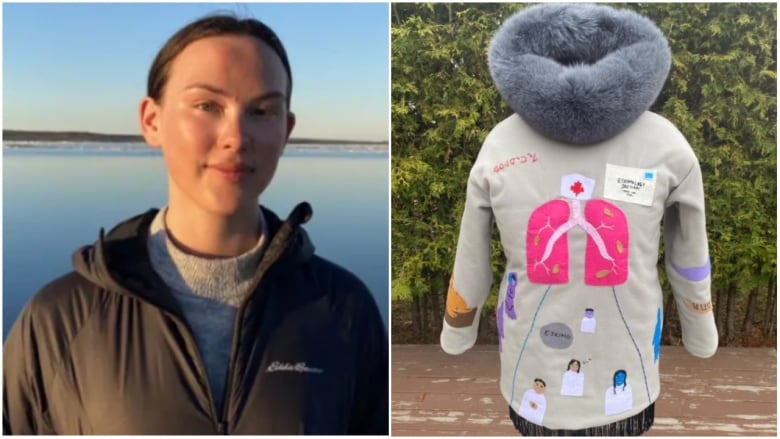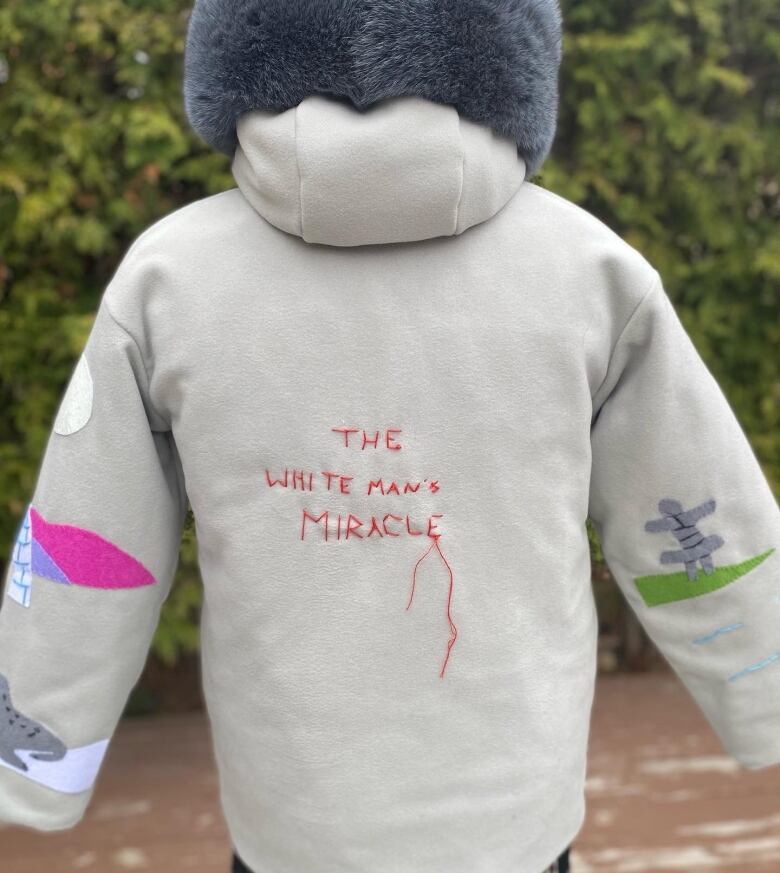Inuk student sews parka to tell 'heartbreaking' story of tuberculosis sanatoriums
CBC News | May 02, 2022
Categories: news
'I wanted to show the way that tuberculosis sanatoriums were used as a form of colonialism'
CBC News · Posted: May 02, 2022 1:24 PM CT | Last Updated: May 2

A Nunavut seamstress studying at Carleton University has created a hand-sewn parka to "depict the harrowing history of tuberculosis sanatoriums and Inuit."
Augatnaaq Eccles was born and raised in Rankin Inlet, Nunavut. She sewed the parka as part of a history project on diseases.
"I wanted to show the way that tuberculosis sanatoriums were used as a form of colonialism," Eccles told CBC.
She also wanted to show how "tuberculosis sanatoriums affected Inuit families not only while they were away, but in the decades after as well."
The historical treatment of Inuit who fell sick with tuberculosis in the mid-20th century was the subject of an apology by Prime Minister Justin Trudeau in 2019. "For too long, the government's relationship with Inuit was one of double standards, and of unfair, unequal treatment," he said at the time.

Inuit remained at southern sanatoriums sometimes for 18 months or even up to six years.
"Many [patients] were unilingual and could not understand the nurses or had never left the North before," Eccles said. "Patients faced isolation, hunger, and in some cases abuse."
'Some never got their children back'
Mothers worried about their children and fathers said the children needed to come home to hunt — their families were starving, said Eccles.
After patients came home, their families were never the same, she said.
"Some mothers left while their children were babies so they didn't know each other once they returned," said Eccles.
This meant children, taken at an early age, came home and were not able to communicate with their parents because they no longer knew Inuktut.
"Some never got their children back, and others waited years for their loved ones to return never finding out they had passed away," said Eccles.
'Heartbreaking'
Eccles started the parka project by reading letters from Inuit patients to the Department of Northern Affairs's section concerning Inuit.
She found her own family's names among them, including her great-grandmother, who raised Eccles' mother.
"That was pretty heartbreaking to read," she said. "I wasn't expecting that but it added to my motivation to get this story out."

Eccles' anaanatsiaq (grandmother) also spent several years in a Manitoba sanatorium.
"As I read through the heartbreaking letters there was a repeated theme of family separation and the effects it had on not only family dynamics but the health of each other," said Eccles.
Scenes of longing for home
Eccles used her anaanatsiaq's hunting parka pattern as the basis of her design. She was inspired by Inuit wall hangings and stories of Inuit using creativity and art to provide for themselves.
A gravestone, embroidered with "Eskimo" is depicted to represent the people who never made it home. The sleeves are stitched with Arctic scenes to show the home patients "desperately longed for" but could not reach.
On the back of the parka, Eccles embroidered the phrase "white man's miracle," a quote used by Maclean's Magazine journalist Frank Croft in 1958, when he wrote The Changeling Eskimos of the Mountain San describing how Inuit were treated in sanatoriums.
Though Eccles isn't yet sure where the parka will end up, she hopes it finds a home where it can be used for learning, possibly on display somewhere, "as opposed to in my bedroom where it's not really getting any use.
Tuberculosis still affects Inuit communities today. The tuberculosis rate among Inuit is 290 times higher than for non-Indigenous people in Canada.
Health experts say one way to cut tuberculosis rates in Nunavut communities would be to establish a national strategy for food security and improve housing conditions.
Written by Avery Zingel with files from Cindy Alorut and Natalie Pressman


